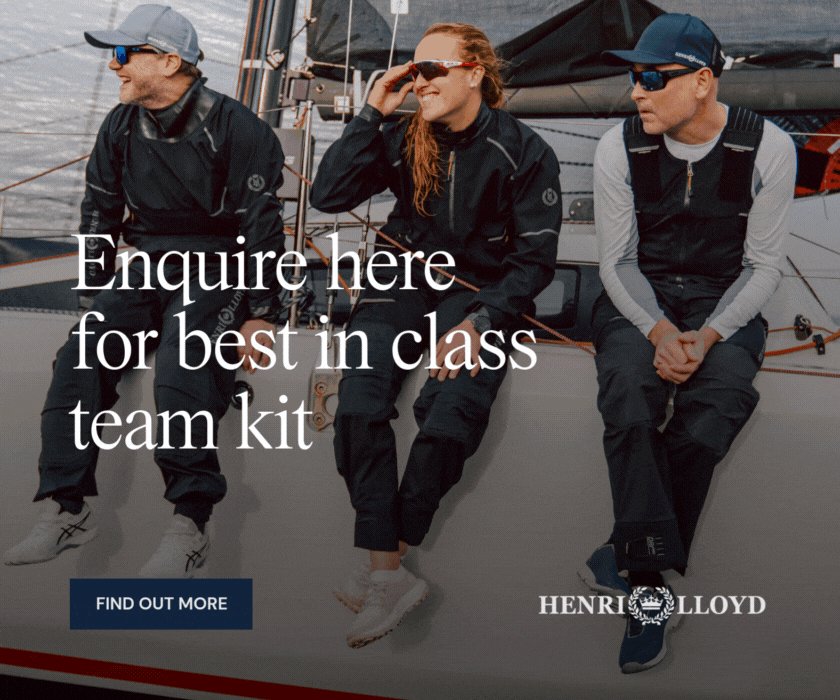
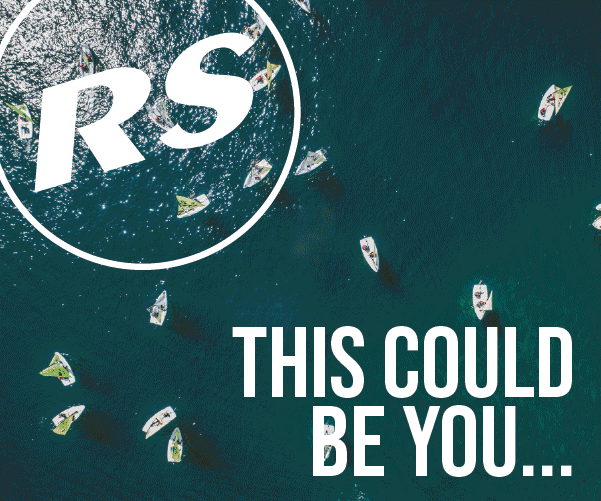



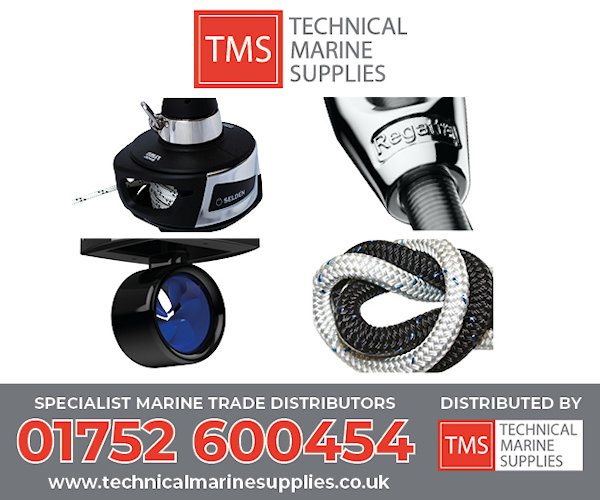

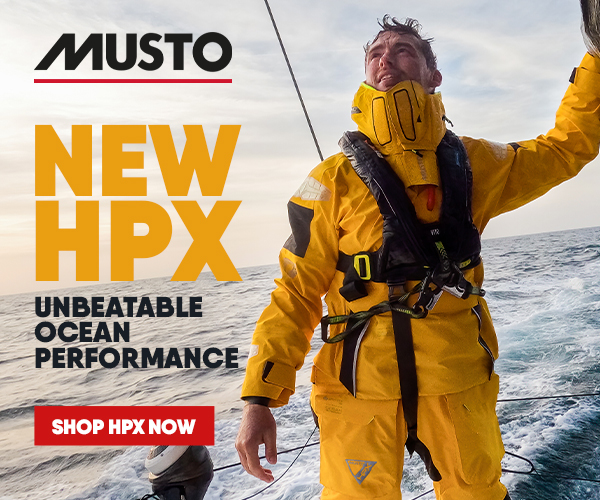
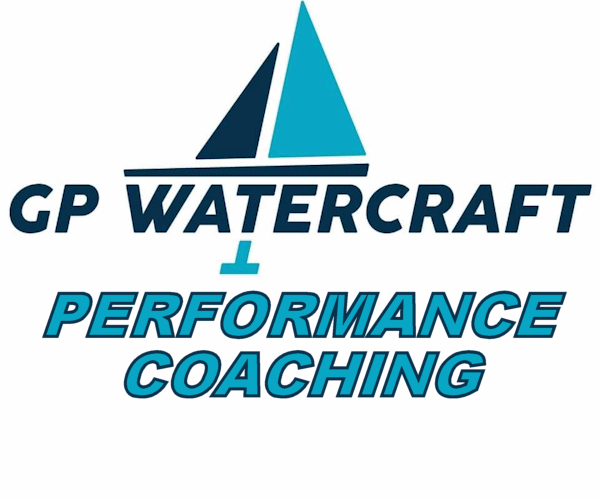
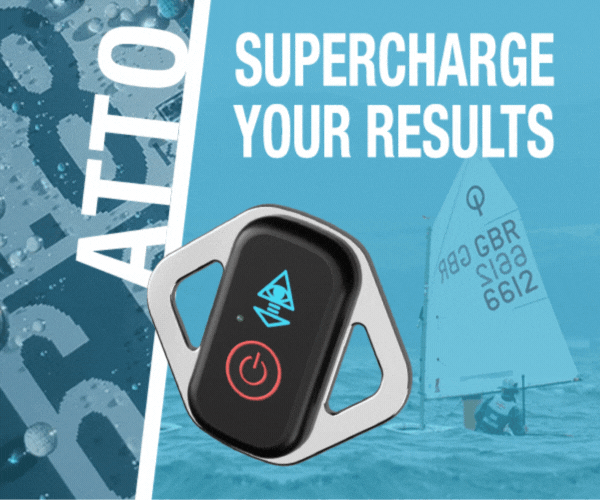

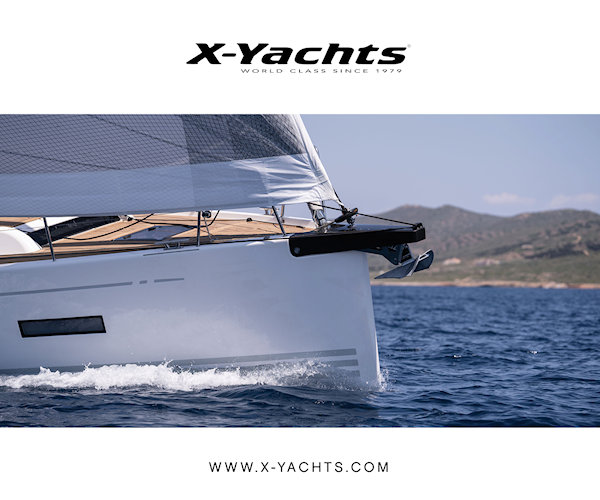
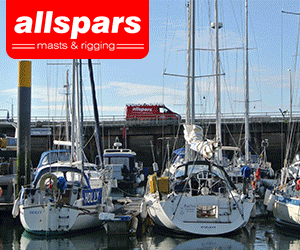
| Rossiter Pintail Mortagne sur Gironde, near Bordeaux |
 |
| Laser 140101 Tynemouth |
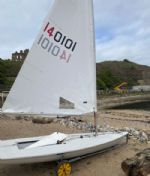 |
| Laser 28 - Excellent example of this great design Hamble le rice |
 |
List classes of boat for sale |
New ladies skiff |
Post Reply 
|
Page <1234 18> |
| Author | |
Rupert 
Really should get out more 
Joined: 11 Aug 04 Location: Whitefriars sc Online Status: Offline Posts: 8956 |
 Post Options Post Options
 Quote Quote  Reply Reply
 Topic: New ladies skiff Topic: New ladies skiffPosted: 31 Oct 11 at 12:55pm |
|
According to Elvstrom, the Finn was 4th in the scandinavian trials (not IYRU) in 1949, but the design was preferred. Inspired decision, really!
|
|
|
Firefly 2324, Puffin 229, Minisail 3446 Mirror 70686
|
|
 |
|
Chris 249 
Really should get out more 

Joined: 10 May 04 Online Status: Offline Posts: 2041 |
 Post Options Post Options
 Quote Quote  Reply Reply
 Posted: 31 Oct 11 at 11:36am Posted: 31 Oct 11 at 11:36am |
But with respect, is there objective evidence that the ISAF trials came to the wrong decision and (say) the Unit or Unicorn should have been chosen? You say the Contender is one of the best boats around, so doesn't that underline that the ISAF process, while human and therefore imperfect, may not deserve a lot of the criticism it cops? I'm thinking about those who claim (for example) that the Hornet, Thistle and Osprey beat the FD when the contemporary detailed records show nothing of the sort.* Okay, you may feel the Unit is quicker in light winds and the Contender has issues in light stuff (agreed) but what I was trying to say is that the criticism heaped on ISAF trials may not be earned. With respect, if you or I or anyone happens to believe that light wind performance means the Unit should have been chosen (or something like that) then we simply have a difference of opinion with ISAF's selectors. Does that mean that the whole edifice deserves the abuse so often thrown at it? Can't ISAF's selectors be allowed to have different preferences, particularly since people from different countries often have different tastes in boats? Maybe ISAF chose the Contender because Euros and Yanks (I've forgotten who was on the committee) preferred something more stable in light winds, even at the expense of light air speed. If so, how can we know that they are wrong in making that choice, or no more subject to politics or unfavourable influences any more than you or I and Joe Bloggs (well, at least Bloggsy and me) are? Furthermore, while I'm happy to admit that the Unicorn may well have been the better boat, in what way was this "proven"? Sure, the Australis failed, but the Unicorn hasn't exactly taken off in a big way internationally. Maybe the world just wasn't ready for a one design A Class - after all, the 17-18' singlehanded OD cat bracket remains pretty dead despite attempts by Nacra, Hobie, etc. Therefore is it ISAF's fault for choosing the wrong boat? Maybe they tried valiantly but just failed, in the same way as mag editors, boatbuilders and pundits fail because they are human? Sometimes it seems that ISAF just cops it no matter what it does. They cop it for varying from their specs (Dart and Soling) for making choices outside the specs, they cop it for staying within their specs (Lexcen on the Contender being too heavy). They cop it if the boat dominates the trials and than fails in the marketplace (Tempest) or if they choose a boat that doesn't win every trial (Soling) and does quite well in the marketplace for a while. The main point, though, was that there is a lot of misinformation about the ISAF trials. People abuse the system for daring to choose a boat they don't personally want. The system isn't perfect, but surely we must allow for people to have different ideas about boats than we do? PS - none of this excuses that bloody RSX!  :-) :-)* in this case and the Finn trials I am going strictly off records as I could only interview one person actually involved in the trials.
Edited by Chris 249 - 31 Oct 11 at 11:55am |
|
 |
|
Chris 249 
Really should get out more 

Joined: 10 May 04 Online Status: Offline Posts: 2041 |
 Post Options Post Options
 Quote Quote  Reply Reply
 Posted: 31 Oct 11 at 11:10am Posted: 31 Oct 11 at 11:10am |
If you are going to make such criticisms, could you please provide evidence that the trials occurred and of those results? This is an extract from a personal e-mail from Ian Bruce, the designer of the Byte and Byte CII (also, I think - but may well be wrong, the Laser) "I’m afraid that, ever since the CII went up against the Radial for the 2008 Olympic Games, and although judged the best suited, it lost to the Radial (judged the least suited!). At that moment in time It was no longer viewed or sailed on its merit but became the “either/or” boat to the Radial." [/QUOTE]But with respect, that says nothing about their being a trial series - merely that the Byte CII was a candidate for the Games, which has never been in doubt. Like David, I'm interested in the ISAF/IYRU trials to the extent of interviewing those who attended and finding and copying just about everything I can find. I did an interview with Ian about the CII rig and sailed the prototype, but I could not and cannot find anything about any trials for the women's singlehander. There WAS a selection, but there is not the slightest hint of any trials ever being held, or of the Byte (nice boat as it is) winning it. As the Byte class itself said of its summary about the Olympic selection, "The Events Committee appointed a Working Party to assess the merits of all the boats submitted for all the disciplines and to submit their recommendations in Copenhagen. Canada’s David Sprague was a member of this Working Party. Based on this report, the Events Committee then voted on the Classes to be recommended to the ISAF Council which is the final decision making body within the organization. The Events committee chose the Radial and made that recommendation to Council. In all the other disciplines the decision on the equipment was either unanimous or with an overwhelming majority. In the Women’s Singlehander it was Radial 12, Europe 8, Byte 1 and 1 abstention. This followed closely the recommendations of the Working Party.... The Byte CII was seen to be a boat that was seriously addressing the issue of weight with a modern, attractive, state-of-the art rig. However, it was felt that picking the Byte would be more risky at this stage of the development of the CII rig than choosing either the Radial or the Europe. “The Byte, with its new CII rig, offers the prospect of low costs and greater appeal through change to a modern, low cost, high technology rig.” The above comes from the Byte class' own report - http://www.byteclass.org/news/cii/After_Copenhagen.htm The official minutes of the ISAF Events Committee meeting for 10 November give the following votes- Byte 1, Europe 7, Flash 0, Radial 11, Zoom 0. See The class's own report says nothing about the Byte being judged best suited and the Radial least suited, and in fact it says quite the opposite - that the Working Party appointed to judge the boats found only 1 vote going to the Byte compared to 12 to the Radial. The Byte's own statement on the Olympic selection clearly states that the Byte was NOT "judged the best boat". It was, according to the Byte report, " the subject of discussion in at least three Committees – the Women’s Committee, the Sailing Committee and the Centreboard Committee. In all three cases the Byte Class was complimented on the development it was undertaking with the new rig and that it was almost certainly the future of singlehanded sailing." I have already referred to Ian as being (according to Julian Bethwaite)) a genius and I think he is a brilliant man who has done a lot for sailing. The Byte is a very nice boat (the comment about nosediving comes straight from Ian to me and is not so much a criticism as a comment about the fact that no boat is perfect) and the CII rig is nice (I sailed one during its development). However, it seems clear that there was no trials and no ISAF decision that clearly went against logic. You may think that the Byte CII should have been chosen, I may think the Byte or the Brand X 26 should have been chosen, Joe Bloggs may think the Woopersuper 12 should have been chosen. But is the fact that someone else had a different view to you or me or Joe proof that they are wrong? With respect, there still seem to be very few cases in which there is OBJECTIVE proof that ISAF got it wrong. Sure, some people may have preferred different outcomes and ISAF isn't perfect, but surely we have to allow for the fact that the Czechs and Yanks and the guy down the road have the right to choose something we may not choose? Edited by Chris 249 - 31 Oct 11 at 11:12am |
|
 |
|
Stargazey 
Groupie 
Joined: 15 May 10 Online Status: Offline Posts: 45 |
 Post Options Post Options
 Quote Quote  Reply Reply
 Posted: 30 Oct 11 at 8:00pm Posted: 30 Oct 11 at 8:00pm |
|
[/QUOTE]
If you are going to make such criticisms, could you please provide evidence that the trials occurred and of those results?
This is an extract from a personal e-mail from Ian Bruce, the designer of the Byte and Byte CII (also, I think - but may well be wrong, the Laser)
"I’m afraid that, ever since the CII went up against the Radial for the 2008 Olympic Games, and although judged the best suited, it lost to the Radial (judged the least suited!). At that moment in time It was no longer viewed or sailed on its merit but became the “either/or” boat to the Radial."
|
|
 |
|
Dougaldog 
Far too distracted from work 
Joined: 05 Nov 10 Location: hamble Online Status: Offline Posts: 356 |
 Post Options Post Options
 Quote Quote  Reply Reply
 Posted: 30 Oct 11 at 3:04pm Posted: 30 Oct 11 at 3:04pm |
|
Chris 249,
You'll notice that I was very careful in my selection of words and made no reference at all to the actual boat that was chosen in the mens 'skiff Trials' at Garda. I'm a great believer in the phrase 'the record books show' and in this case they show that the 49er was chosen. BUT - my comments reflect my interest in not so much the choice of dinghy, but in the process that underpins the selection. The other difference is that I'm not trying to draw inferences from a magazine report - or even quoting from them, but these are my own first hand observations as one who was there (ditto Quiberon/Performance Singlehanders and Hyeres/Indication event womens skiffs).
This topic of recent Trials is therefore something of a pet subject for me and having been present, feel that I'm well able to comment in my own right - and have done in a number of articles.
One of my observations would be on how the process has changed: back in the days of the Singlehanded Trials (1965-68) the backers/designers/builders rocked up with their boat and with a chosen helm and that was that, there was no boat swapping nor independance in the sailing. So, someone with a potentially good boat but who was only an average (or even good) helm, could come up against Elvstrom or Uwe Mares - an Olympic Medallist in the making! This 'rent a helm' played quite a big part in the outcome of the selection process, as because there wasn't any swapping of boats, a good helm in a lesser design could still (and did) feature.
Now regarding those Trials...as I get around various sailing events, I'm trying to build up my own library of 'audio histories' - if I can interview one of the movers and shakers from way back when, I will - capturing their thoughts where possible on Video, if not on audio (sometimes sadly just in writing - , you have to take your chances when offered!).
So, I have an indepth store of knowledge from the primary sources - the people who were there. I've interviewed participants not only in the UK, but in Europe and Australia too, so have a pretty good feel for what really went on. As regards the 2nd set of Trials (La Baule), if you think that in an almost exclusively light airs series, that the prototype Contender was the fastest boat, then I think you're amiss somewhere. Don't forget, Bob Miller, who was never one for the maths, had got the sail plan wrong, leaving the boat markedly light on sail area! By now the IYRU had relaxed the rule on trapezes, with the result that many of the entries were doubled up - so you'd have a sliding seat version and a trapeze version of the same boat. (Sadly, Elvstrom didn't compete at La Baule with the Trapez, so what would have been an amazing side show in the competition - Trapez V Contender, never took place: Having not competed in La Baule, he wasn't eligible for Medemblik)
These were still early days in trapeze techniques and from the interviews I held with helms who were competing at all of the the events, in the light to medium airs the sliding seat was seen as a preferable option to the trapeze. Being able to sit 1/3 out was so much easier that the quasimodo position, hunched up on the side deck, that is still to this day the bane of Contender sailors.
In the end, the IYRU struck lucky, they had breeze late on in the Medemblik Trials and this allowed the Contender to show it's paces. Even then, it was not straight forward, as there were boats that displayed the potential for superior upwind performance, but off the wind the Contender raced away, which was just what the IYRU wanted. By then it was clear to all that the Australian boat was the 'chosen one', even when the results still suggested that the event was wide open. It was so obvious in fact that on the penultimate day, after sailing, most of the other 'teams' stopped work on sorting their boats and instead went for a 'knickerbocker glory' eating competition. This was won by the late and great Peter Bateman (who went to to win the Fireball Worlds), who ate so many that he was too sick to sail the final day. So, the IYRU got the boat they wanted, only to then marginalize it under pressure from the widespread powerbase of the Finn - and the rest is, as they say history.
But there is one final point re the Contender- seeing that you raised the name of Jack Knights. Now I knew Jack, I'd not go so far as to say 'well', but enough to be on first name terms. After the selection of the Contender, Jack was put on the International Launch Committee for the new class, a task that he managed in parallel with that of importing boats into the UK. He was part of a group that ran demo events and races around the country, one of which was held at Weston. After the event, he was at my parents house, along with Tim Hockin, Dinghy Mast supremo at Proctors (these two, together with Paul Nevard at Banks and the irrepressible Freddie Gale) were very much the driving force behind getting the class established. In the robust discussions about the boat that day, Jack was clear that he was more than mindful of the Achillies Heel of the boat - in particular the light airs performance. A life long supporter of one design sailing, Jack held the view that as long as you're sailing against other Contenders this is okay, as you're all hunched up and bloody uncomfortable together, a valid point as even now, with far better rig control, this is still the downside of sailing what has to be still one of the best dinghies there is.
PS - A Class cats...now until recently, I still sailed sometimes with people who were at Sheppy in 1965, so again I'm drawing and making my comments on what I would class as 'primary source' material. The australian boat was more sophisticated and at that stage more advanced that the Unicorn - which is reflected in the Series results. But again, there was no swapping around of helms as you'd get today, so someone who knew his boat well and could exploit the performance was always going to be well placed. Still, the view, from people who were actually at Sheppy, was that the Unicorn was the 'right' boat - as events went on to prove!
Today, the Trials are so much more meaningful, only to come a distant 2nd place to the goings on in the Committee Rooms some time later!
Dougal
|
|
|
Dougal H
|
|
 |
|
Chris 249 
Really should get out more 

Joined: 10 May 04 Online Status: Offline Posts: 2041 |
 Post Options Post Options
 Quote Quote  Reply Reply
 Posted: 30 Oct 11 at 3:29am Posted: 30 Oct 11 at 3:29am |
Interesting stuff, Dougal, but if the 49er wasn't the best boat then just about every press report of the time was wrong as far as I can see! Which boat do you claim was better - the extraordinarily heavy Laser 5000, the Boss which has died out, the B14, the Mach 2, or something else? Surely we need some evidence to conclude Seahorse and other mags and the Bethwaites and Michael Jackson (who are of course biased) are wrong. Where the published race times and reports inaccurate? Why was there a political fix and how come the 49er consortium out-politicked the powerful Laser UK and Topper companies? Surely we have to have some very strong evidence before claiming someone else made the wrong decision and for dubious reasons. Edited by Chris 249 - 30 Oct 11 at 3:30am |
|
 |
|
Chris 249 
Really should get out more 

Joined: 10 May 04 Online Status: Offline Posts: 2041 |
 Post Options Post Options
 Quote Quote  Reply Reply
 Posted: 30 Oct 11 at 2:39am Posted: 30 Oct 11 at 2:39am |
When was there an Olympic trials series between the Laser Radial and the Byte CII? The Byte CII site doesn't refer to one. The ISAF press release about the selection makes no mention of one (seehttp://sailing.org.au/?page=13652&Format=,%20print,%20pda&MenuID=News%2F10537%2F0). Google gives no clue. I certainly cannot recall hearing of one, or reading of one. With respect, it's a bit harsh for ISAF to cop criticism for allegedly ignoring trials that apparently did not actually occur! If you are going to make such criticisms, could you please provide evidence that the trials occurred and of those results? |
|
 |
|
Stargazey 
Groupie 
Joined: 15 May 10 Online Status: Offline Posts: 45 |
 Post Options Post Options
 Quote Quote  Reply Reply
 Posted: 29 Oct 11 at 6:35pm Posted: 29 Oct 11 at 6:35pm |
|
Winning races at 'trials' does not get the best boat. When a replacement for the Europe was being sought, the Olympic trials deemed the Byte CII as 'most suitable'. The Laser Radial was deemed 'least suitable' of the various boats on offer ... which makes its eventual selection a rather odd affair. |
|
 |
|
Skiffman 
Far too distracted from work 

Joined: 27 May 04 Location: United Kingdom Online Status: Offline Posts: 291 |
 Post Options Post Options
 Quote Quote  Reply Reply
 Posted: 29 Oct 11 at 6:05pm Posted: 29 Oct 11 at 6:05pm |
|
That is the 49er FX that I was talking about, great rig. Would really like one for the big breeze, with 155kgs on board it would be way faster than a normal 49er in over 20 knots!
Out of all the boats I think this is the best option
|
|
 |
|
Andymac 
Really should get out more 
Joined: 04 Apr 07 Location: Derbyshire Online Status: Offline Posts: 852 |
 Post Options Post Options
 Quote Quote  Reply Reply
 Posted: 29 Oct 11 at 6:02pm Posted: 29 Oct 11 at 6:02pm |
Agree totally.
|
|
 |
|
Post Reply 
|
Page <1234 18> |
| Forum Jump | Forum Permissions  You cannot post new topics in this forum You cannot reply to topics in this forum You cannot delete your posts in this forum You cannot edit your posts in this forum You cannot create polls in this forum You cannot vote in polls in this forum |
Copyright ©2001-2010 Web Wiz
Change your personal settings, or read our privacy policy












 Printable Version
Printable Version Delicious
Delicious Digg
Digg Facebook
Facebook Furl
Furl Google
Google MySpace
MySpace Newsvine
Newsvine reddit
reddit StumbleUpon
StumbleUpon Twitter
Twitter Windows Live
Windows Live Yahoo Bookmarks
Yahoo Bookmarks Topic Options
Topic Options